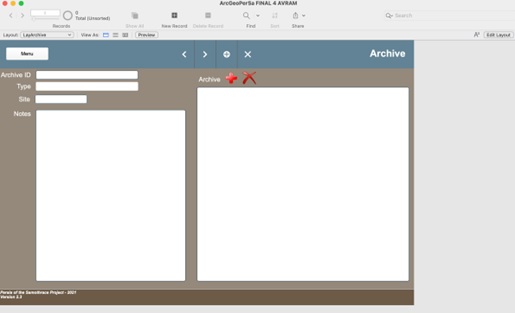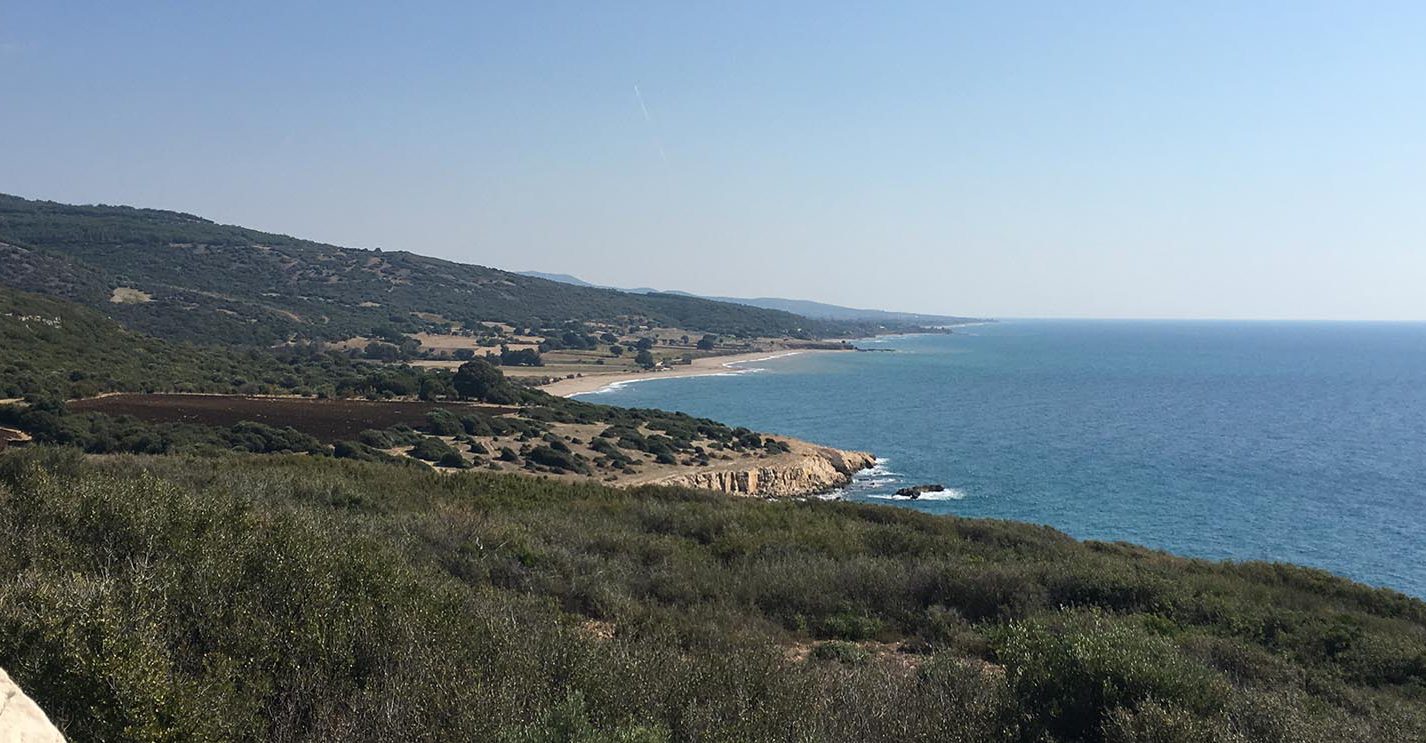
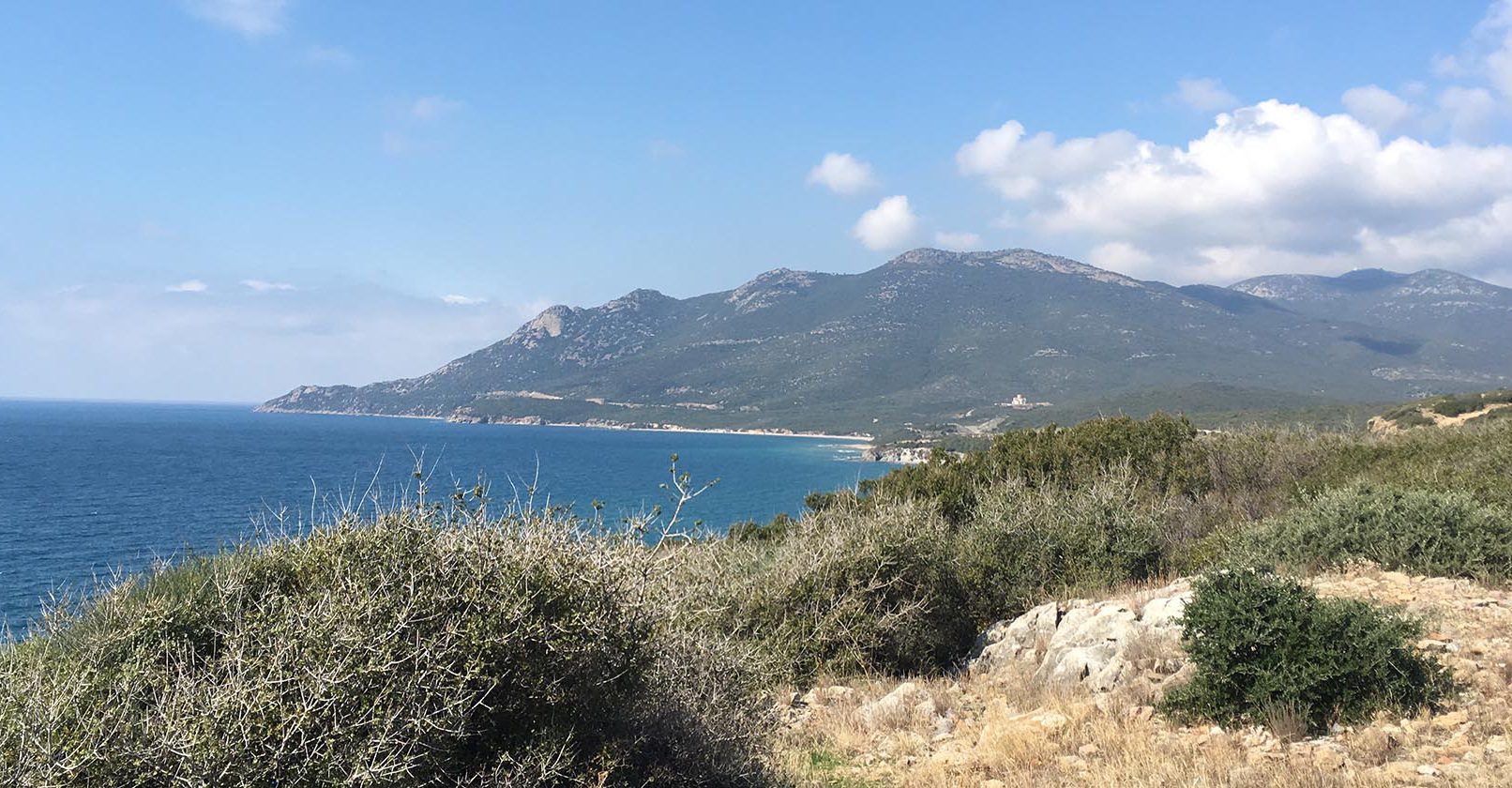
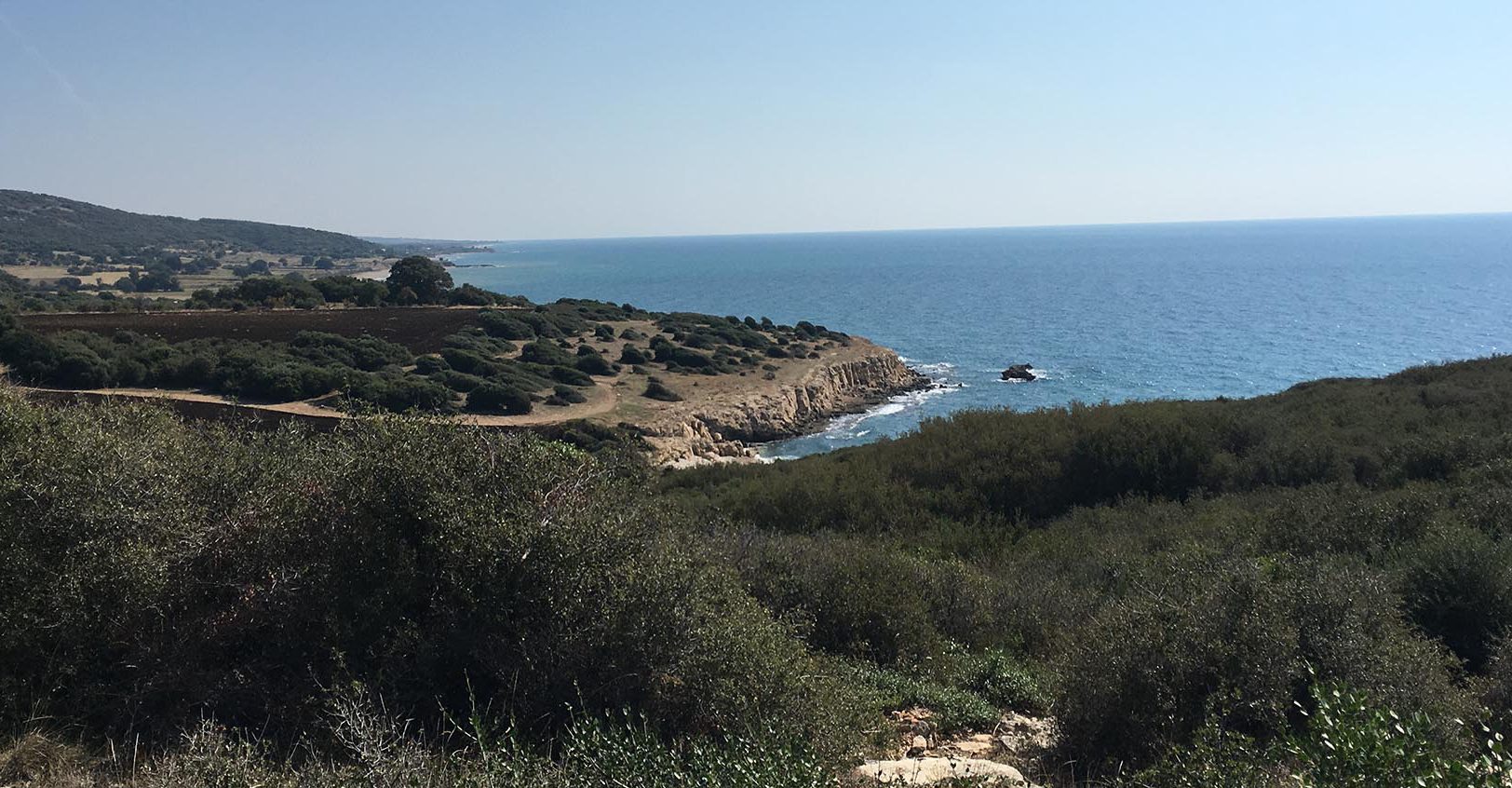
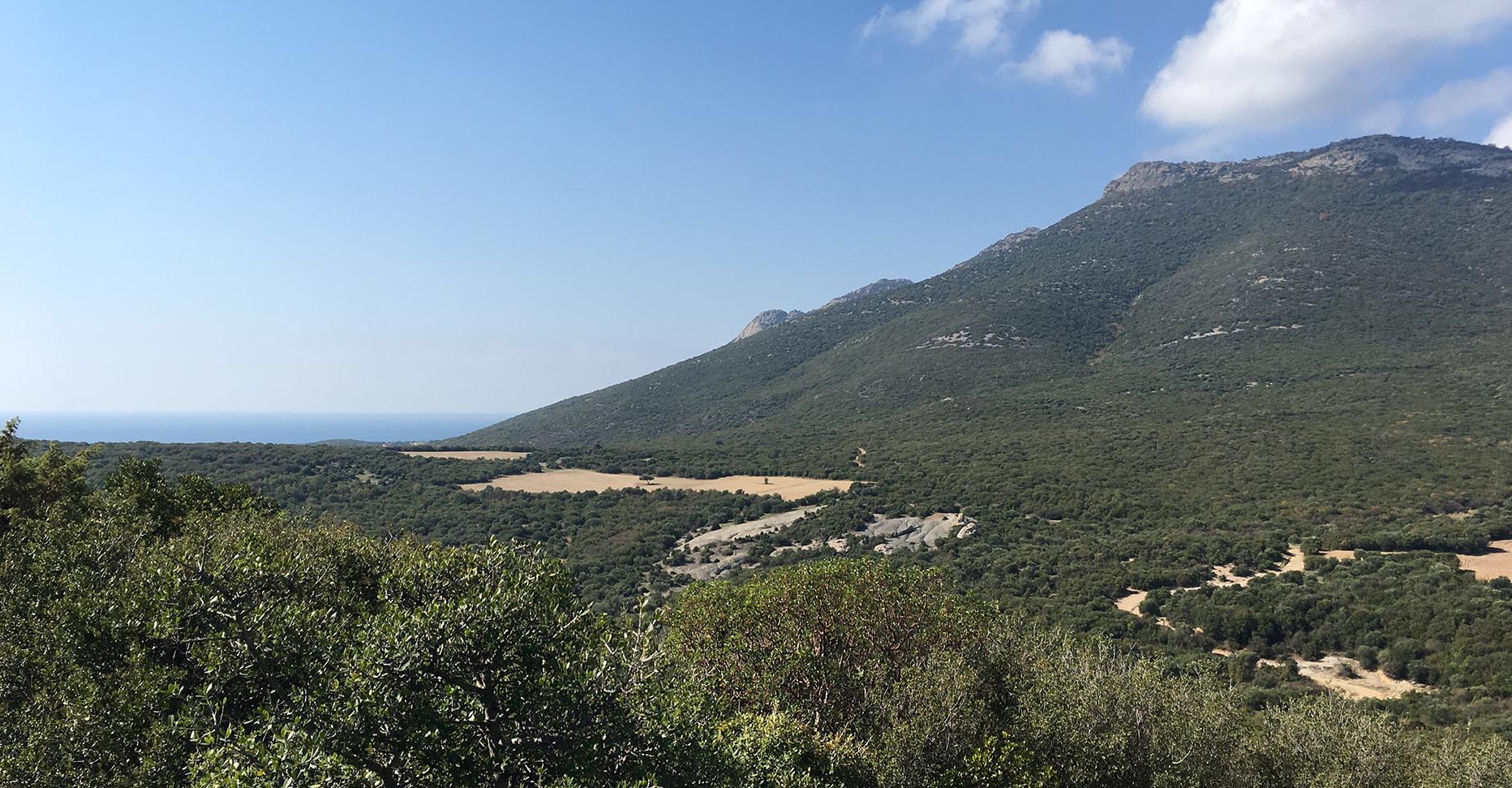
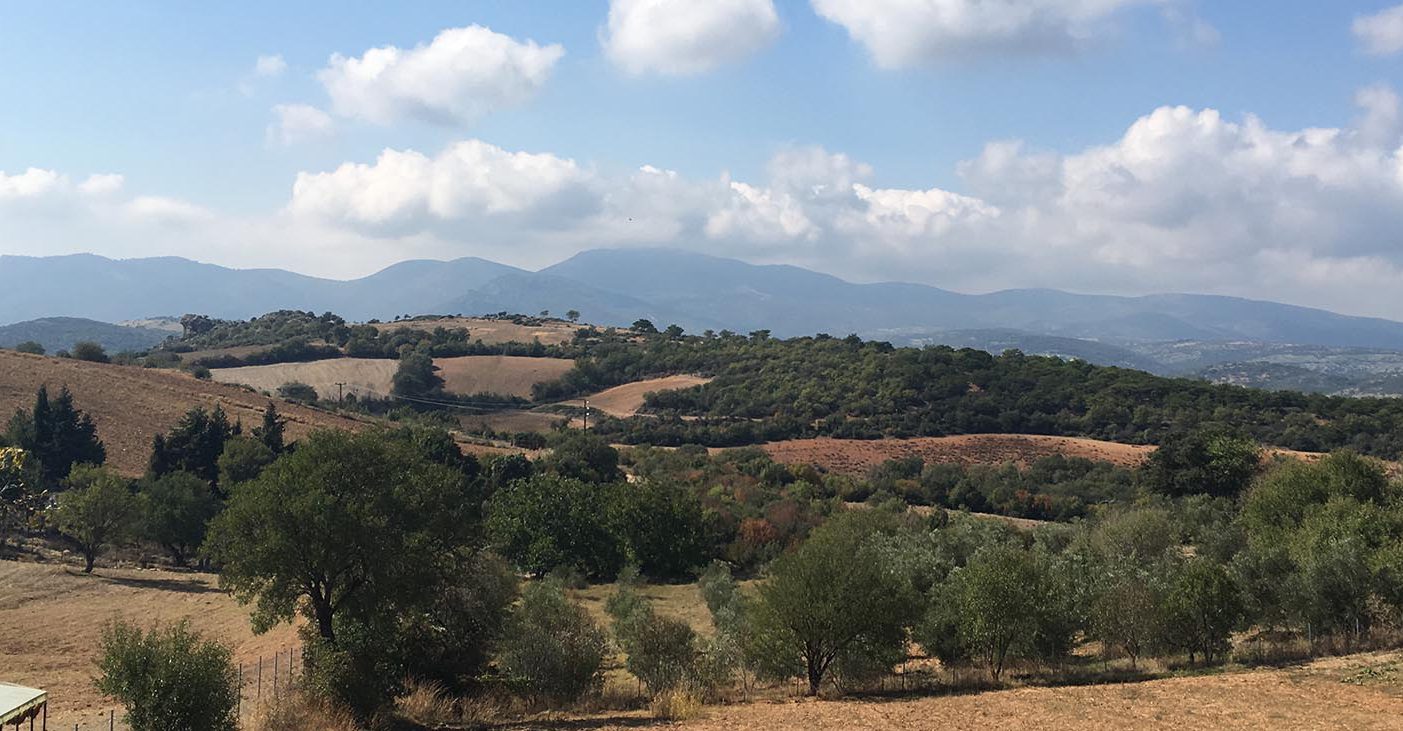
The Finds Database
The Finds Database created for the Peraia of Samothrace Project was built by Nikos Sirris, assisted by other research members, using FileMakerPro. As the main portal for cataloguing finds and other information, the database’s Menu offers five interconnecting options: Sites, Finds, Photos, Reports, and Archives.
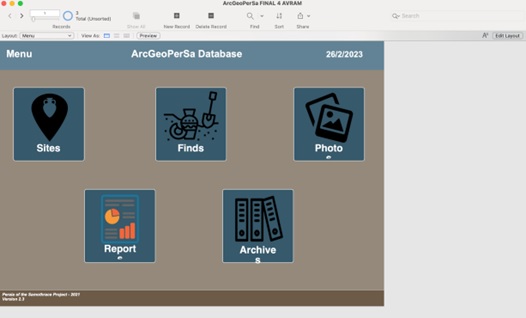
Sites: This interface taxonomizes information according to area of interest and grid number. For example, if interested in exploring finds from Area 1 (Petrota – Exochi), one can navigate through the ‘Sites’ bar and select ‘1000 – Petrota – Exochi’. Alternatively, one may scroll to view which fields were surveyed in Area 1 and then continue to the corresponding grids with the catalogued finds. The same options are available for Areas 2, 3, and 4. Clicking on the ‘Diagnostic Finds’ options, one is transferred to the specific catalogue entry.
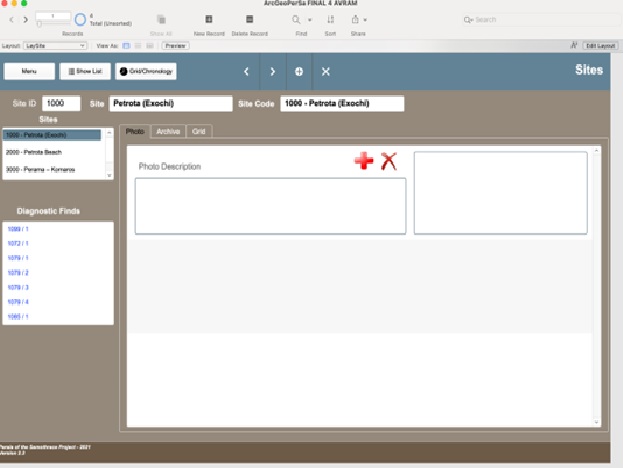
Finds: This is the main Catalogue for diagnostic finds. Each entry offers drop-down options to automatically choose pre-assigned values, e.g., Material < Clay, Metal, Glass, Other, but also boxes to select the Fabric. At this phase, we are still processing the material collected from the surveyed fields and taxonomizing the diagnostics, offering basic information on fabric, preserved dimensions, a brief description, and date. A more systematic study of the characteristic pottery will follow, along with the addition of bibliographical references and other commentary. We decided to process the material in two stages so that we can quickly obtain a chronological horizon of the fields surveyed before proceeding to a detailed cataloguing of finds.
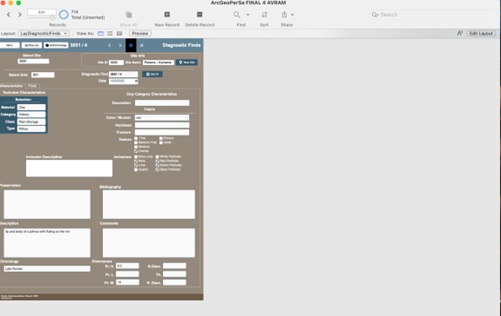
Each entry/find is accompanied with at least one photograph.
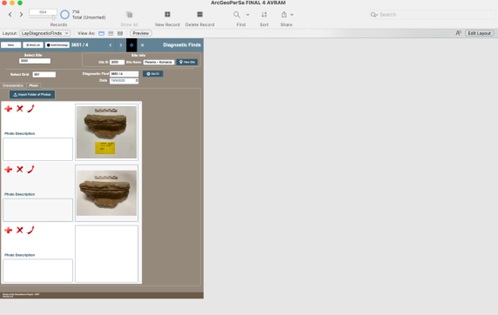
Photos: Photographs of finds can also be accessed directly from the Menu.
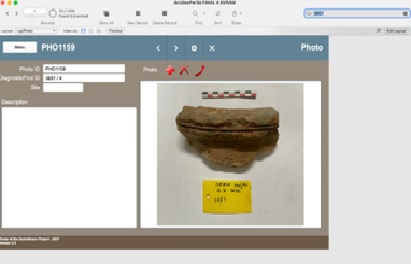
The ‘Show List’ button at ‘Finds’ offers a comprehensive view of the catalogued object in an abbreviated form, and an alternative way to search for different types of material or dates.
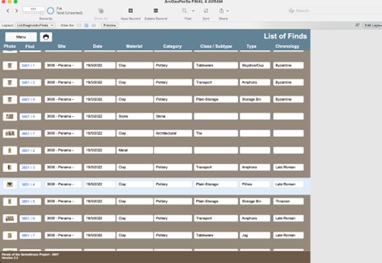
The ‘Grid/Chronology’ button at Finds addresses the correlation between grids and date of finds collected as diagnostic from each field.
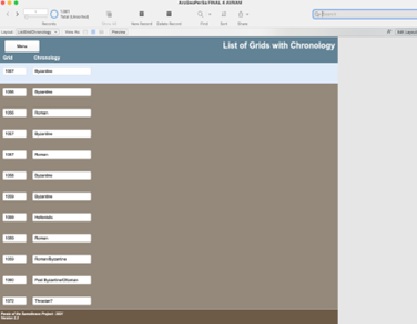
Reports: Selecting the option Report from the Menu gives a summary of finds, pottery and other, catalogued as diagnostic in each grid. This is a useful tool when one needs to view collectively the characteristic finds from a given grid or to contextualize a specific item.
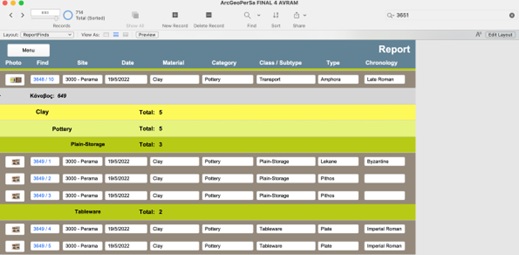
Archives: In the future, we intend to insert in this section related material associated with the survey, such as corresponding data to the WebGIS database, photographs of fields or items of interest that were not collected during the survey but were registered in our Survey123 forms, bibliographical references, and other notes.
